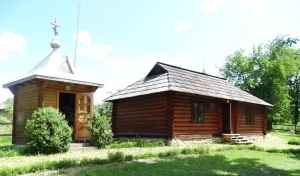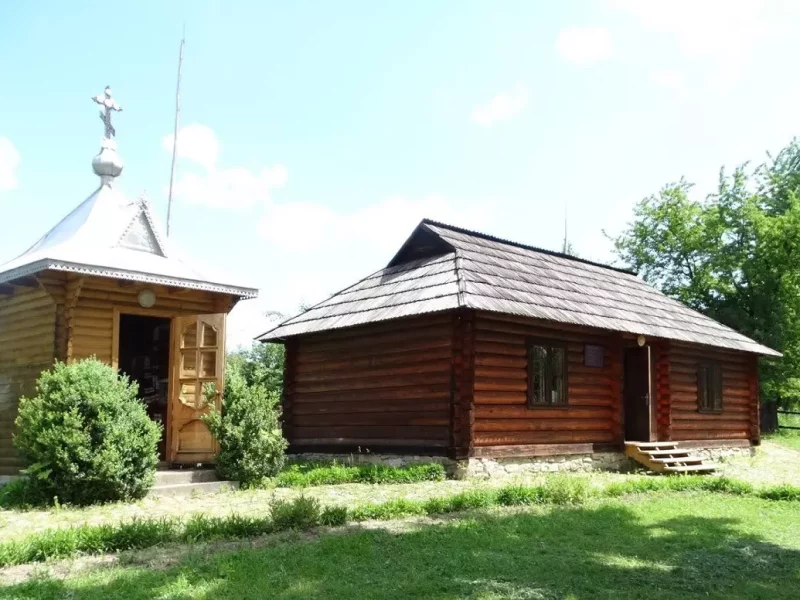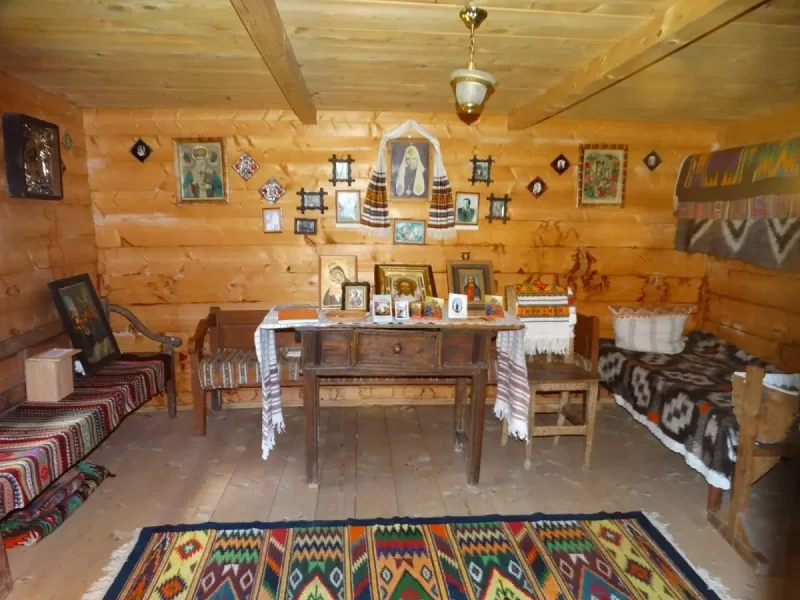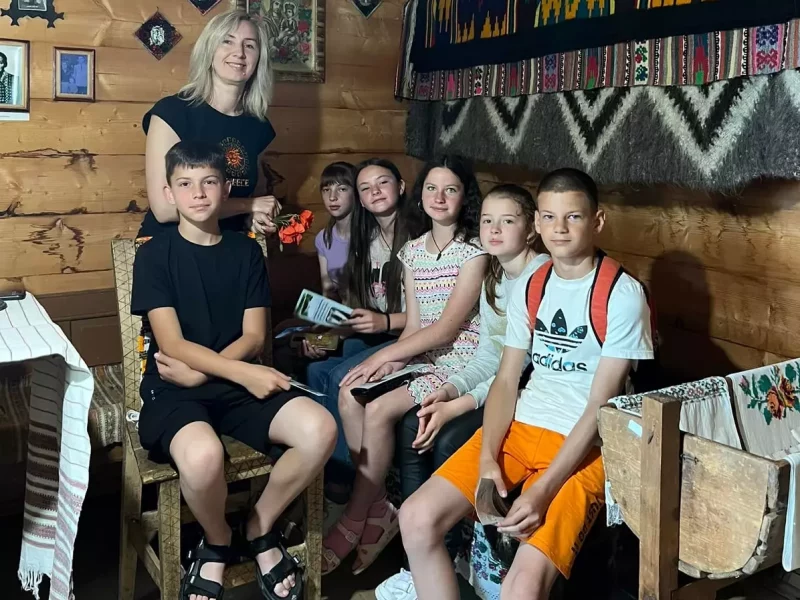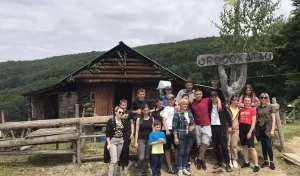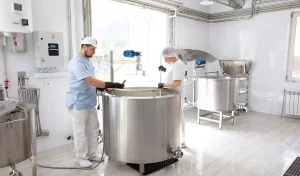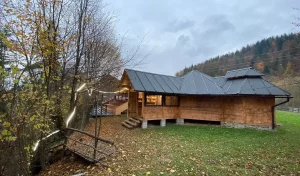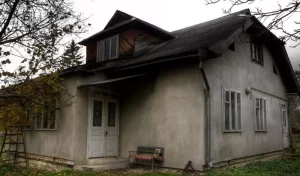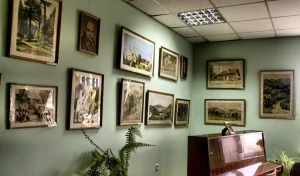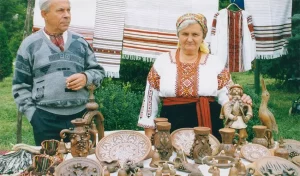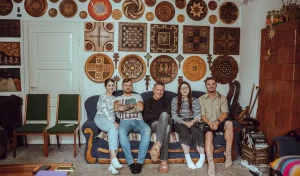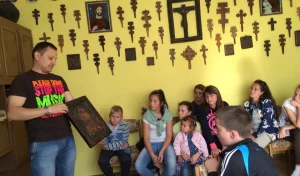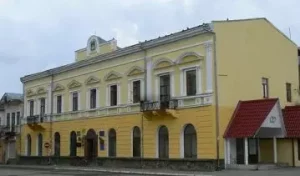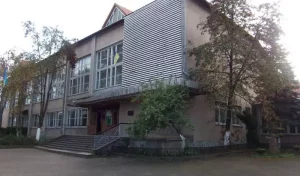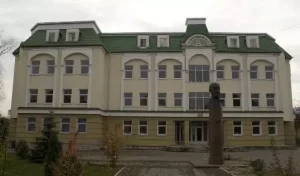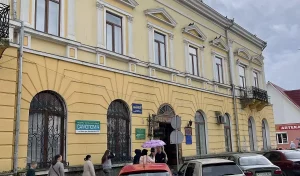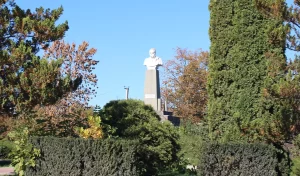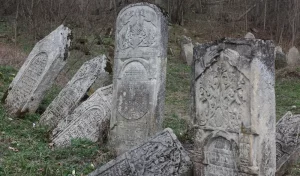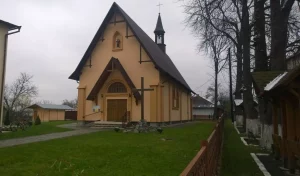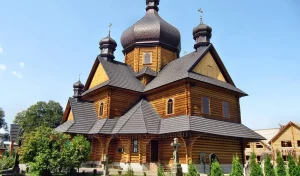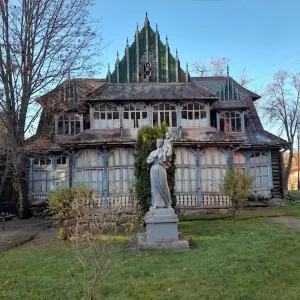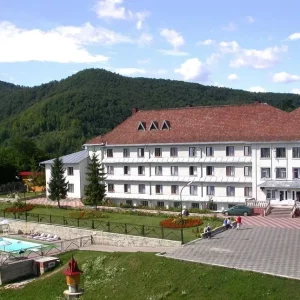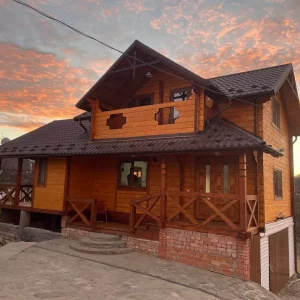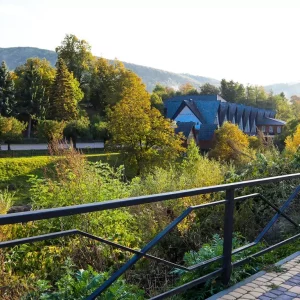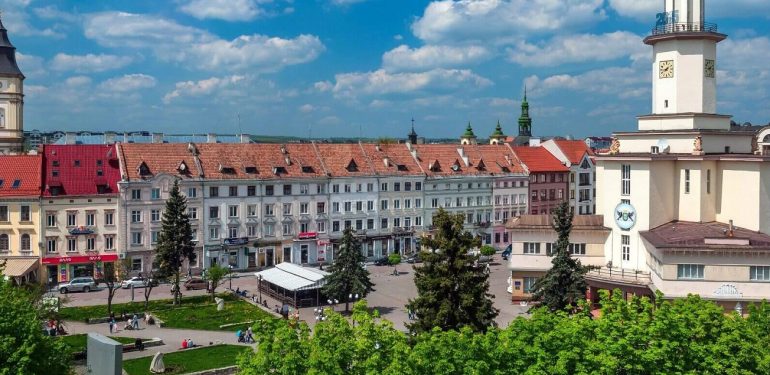The manor house-museum is a peasant house of the 20-30s of the twentieth century, which contains two rooms separated by a corridor.
The upstairs room contains family belongings of the Romanyuk family: a table, sofas, a cradle, a chest, a chair, bedding, a sacrificial altar (hanger) with weaving products, a kudela, family photos, a portrait of the Patriarch who stood for a year on his grave in Kyiv; icons, a bowl with ceramic dishes, pots, and wooden items.
The second room contains an exposition on the periods of Bishop Volodymyr’s life:
- He was ordained a priest and served in the parishes of the Kosiv region.
- Period of exile and persecution.
- Canadian period.
- From bishop to patriarch.
- Period of the Patriarchate.
- A fatal ending.
- Memory.
The exposition contains numerous photographs from different periods of the Bishop’s life, documents, press materials, rehabilitation certificates, videos and recordings of the Patriarch’s speeches, books, and his personal belongings (letters, vestments, patriarchal crosier, clothes, phelons, his own Gospel, and personal icons).
The museum’s collection also includes church paraphernalia, spiritual literature, portraits of the patriarch by artists of the Carpathian region, ancient images and icons.
To achieve its main goal, the museum works in the following areas:
- cultural and educational activities;
- scientific and research work;
- publishing activities;
- exposition work.
The main forms of the museum’s work are guided tours of the museum; consultations; lectures and talks on the museum’s topics; studying the life and work of Patriarch Volodymyr, showing films about the patriarch, studying the museum’s collections, their artistic and scientific value; organising the collection of new information and documents about the life and work of Patriarch Volodymyr.
